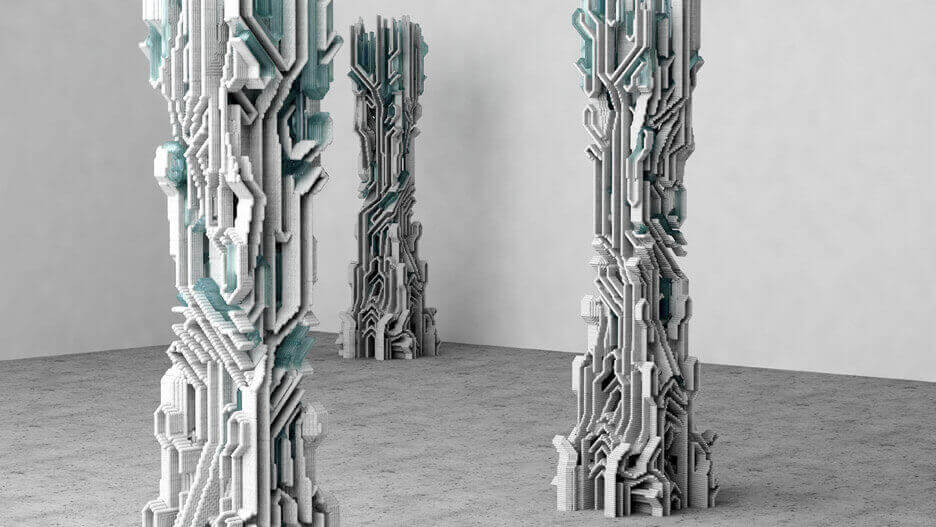Forget chunks of ugly 3D printed concrete. “Fossilized” by Amalgamma uses a new method for printing concrete that yields unbelievable results.
Students from the Bartlett School of Architecture have designed and printed gorgeous concrete furniture and structures. Amalgamma is comprised of four masters students who spent the past year on the one of the coolest student research projects: “Fossilized.”
3D printed concrete buildings and foundational structures seems very much in vogue these days. That’s not what this is about. Rather, “Fossilized” was about reinventing printing. The students have not only created stable practices and structures, but beautiful ones. It’s hard to say whether you’re looking at a functional piece or an art gallery.
“Fossilized is a project that attempts to counteract current ‘stagnant’ 3D printing practices, aiming to reinstate the concept of craftsmanship back into architectural design by adopting a more tectonic approach to 3D printed form. Rather than focusing on actual form generation, this is achieved through an understanding of aggregation and heterogeneity at the material level, encouraging the dissolution of boundaries at the massing, structural and material scales.”

Amalgamma: What’s their New 3D Printing Method?
The new method combines two common practices: extrusion printing and powder printing. The result is “supported extrusion” that yields a higher resolution and larger overhangs.
Concrete is pumped to a robot and deposited through a customized head that allows 1cm resolution. A binder was also incorporated into the extrusion process to harden certain parts of the granular support and create a multi-material piece.
Amalgamma does recognize the difficulty of printing an entire structure from start to finish. Instead, they plan to create smaller pieces, like floor-wall-ceiling assemblies or stair-floor-wall assemblies. These smaller chunks can be fit together, or exist on their own, challenging the idea of the catalogue construction element.
The results of their new methods are extraordinary, and not only from an artistic stand-point. What do you think? Let us know in the comments.
License: The text of "“Fossilized” 3D Printed Concrete Structures by Amalgamma" by All3DP is licensed under a Creative Commons Attribution 4.0 International License.